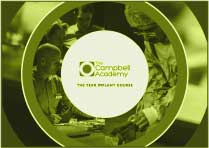.png?width=1627&height=517&name=Full%20TCA%20Logo%20(Purple).png)
Some years ago, I entered in to the world of computer guided implant surgery.
As with all these things I had to hurry up because I felt we were way behind everybody else.
When we first came to use CEREC guide 2 in the practice, it turned out we were of the first people in the country and one of very few people to use it and start to use it routinely, especially in bulk.
Soon after that the dam broke and everybody used it for everything, everywhere.
It was a tide of FOMO, the like of which has rarely been seen in my profession.
As with all exponential expansions in technology in any industry though, it brought with it problems as well as solutions, one of the problems is that surgeons of my age and of my experience level have developed a system of success without guided surgery.
The new surgeons developing now who have never placed an implant but will go on to place many will learn in three dimensions with guided surgery as a routine.
This is not dissimilar to the difference between mine and my sons views with pilotless airplanes or google cars.
How happy would I be to step on to a plane with no pilot and fly half way around the world?
To my son there is no issue with that. He has a trust in technology and in the predictability of the technology that he uses, which means he is as happy with that with as if there was a pilot on board.
I have a (healthy) skepticism of technology and the respect for human decision making that is becoming less and less important in many areas of work.
When I perform guided surgery, it is common for me to override the guide and to ‘tweak’ the final position of what I want.
For the young guys that will not be necessary or, dare I say, possible.
I learned to assess the removal of lower wisdom teeth (a difficult procedure sometimes with significant possible complications) based on a 2-dimensional x-ray.
I learned by pattern recognition.
Doing, sometimes failing, reflecting, doing it again after identifying a possible problem.
I can look at a panoramic radiograph and have a really good idea of how that surgery will go on that patient, because I have done that thousands of times.
For the developing implant surgeon of today, the one who is just graduating from dental school, the training pathway and the learning process will be entirely different.
For any of us who have the privilege to influence those young surgeons this is a fundamental and essential learning point which must be understood and developed going forwards. It will no longer be acceptable to assume “this is how I learned it, so this is how you will learn it” for us older guys it looks like we will have to re-learn how to learn before we can teach.
Blog post number- 1964






Leave a comment